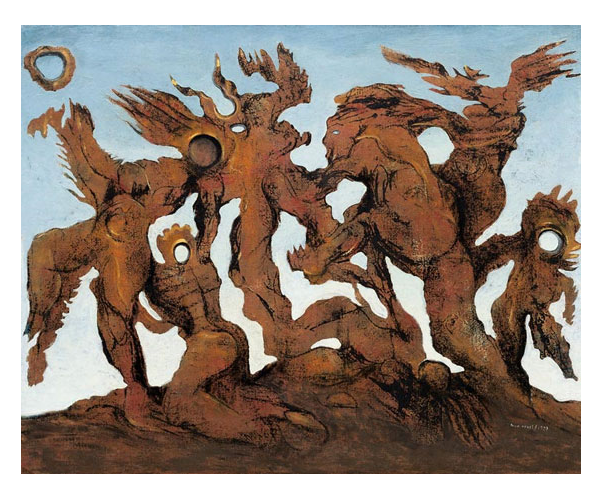Law & Politics
What You Need to Know about Master Forger Wolfgang Beltracchi’s Latest Antics
Master Forger Wolfgang Beltracchi has the press aflutter with a new documentary, two books, and a slew of new paintings he's offering for sale.

Master Forger Wolfgang Beltracchi has the press aflutter with a new documentary, two books, and a slew of new paintings he's offering for sale.

The so-called greatest art forger in history, Wolfgang Beltracchi, is back in the news. Ahead of this week’s wide-release of Beltracchi—Die Kunst der Fälschung (Beltracchi—The Art of Forgery) in Germany, a documentary about the man behind what he claims are over 300 forgeries sold to date, the country’s press has been aflutter over new revelations coming out about his work. Don’t have an hour and a half to sit down and watch? Not to fear. We’ve assembled the five most essential nuggets of intel:
Background: For those just tuning in, for over 35 years, Beltracchi and his wife created what they claim were over 300 falsely attributed paintings. Falsely-attributed because Beltracchi’s works weren’t actually doubles of pieces already found in catalogues raisonné but entirely new, dreamt-up works in the style of mostly impressionist and modern greats. They sold the paintings out of a fictitious collection that his wife said belonged to her grandparents and had been hidden during WWII. The pair were only ever officially confessed to forging 14 works. In years since, German experts have been able to track down around 60 suspected Beltracchi fakes. Key to the pair’s success was meticulous research, which included lab testing of most pigments use in the paintings. That is, with the key exception of a tube of white paint that, unfortunately for Beltracchi wasn’t marked as containing titanium white pigment but, in fact, did. Since Heinrich Campendonk (one of his favorites) wasn’t around when titanium white came around, Beltracchi was found out. And, in October 2011, was sentenced to six years in jail.
The Film: Directed by Arne Birkenstock, the doc comes out on March 6 in Germany and is slated for release in the U.S. as well, though no official date has been set. If that last name doesn’t sound familiar in the Beltracchi annals, it should. Arne is, as it happens, the son of Beltracchi’s lawyer, Reinhard Birkenstock. (We’re sure there’s no conflict of interest there at all.) In its 93-minute run, viewers are offered an inside look at Beltracchi’s current studio and a pseudo-psychological portrait of the now 63-year-old forger and his 55-year-old wife Helene Beltracchi.
The Work: Studio, you say? Indeed. Wolfgang Beltracchi is making work again, churning out paintings with very little noticeable variation from those that previously commanded millions at auction, except for their signature. That now reads Beltracchi. According to various reports, you can get an imitation Max Ernst for $30,000 to $35,000 while a Campendonk will set you back about $15,000 more. Each allegedly takes him around three days to make, and he claims to be able to do just about anyone.
The Sentence: But how is he out of jail? While Beltracchi’s penitentiary may not have the cushy amenities of the former “Club-Fed” of white-collar crime in the U.S., after just a year and a half in the prison, he was allowed to start spending time at home and work outside the prison’s walls. In the time since, aside from making the film and new paintings, the Beltracchis have had time to write two books, both published this January.
Our Verdict: Despite being largely out of jail, Beltracchi still has lawsuits piling up to a grand total said to top $25 million. So, he’s turning his mental acuity towards self-preservation. It’s no secret that fakes and imitations often deck the walls of stately homes and townhouses worldwide, whether in place of originals hidden in a vault or as pure façade. Whether Beltracchi will stoop to made-to-order work remains to be seen. In the mean time, he’s worked up quite the PR campaign in an attempt to displace the evil figure he’s often been carved out to be, especially in the continental arts press. However, whether the public will buy into the genius artist image that’s being conjured in the documentary and elsewhere remains to be seen.